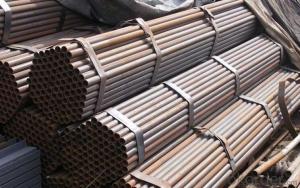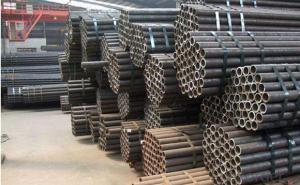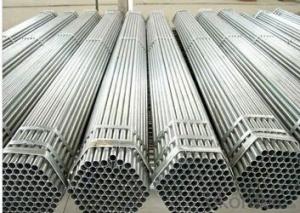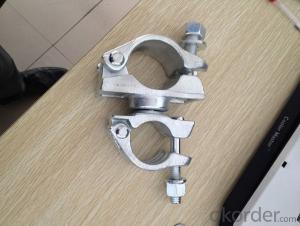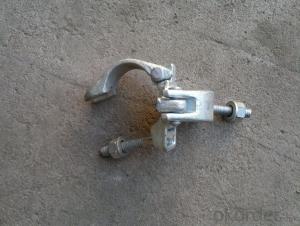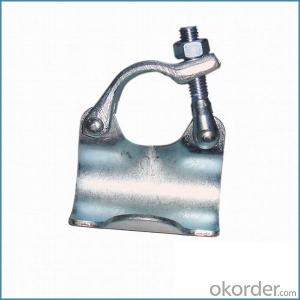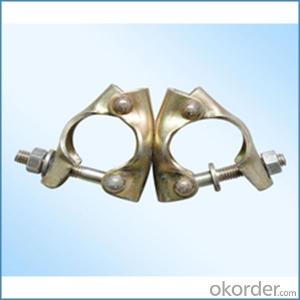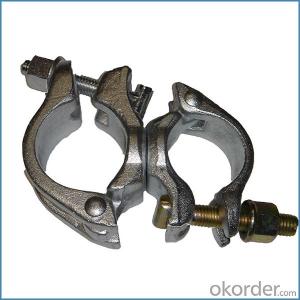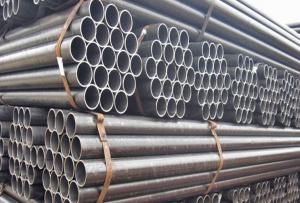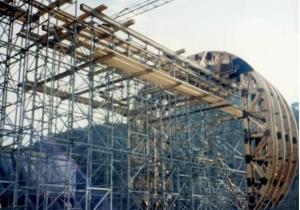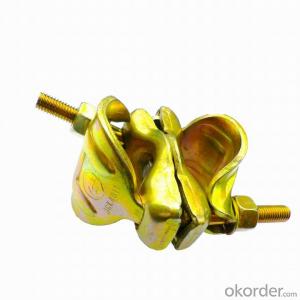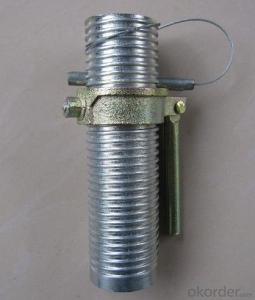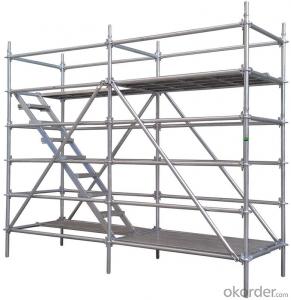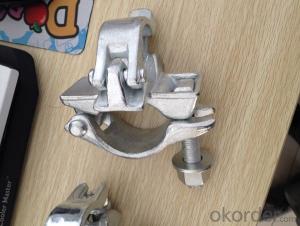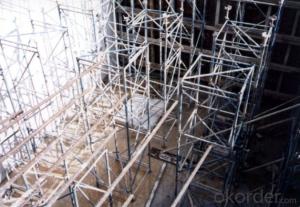STEEL PIPE TUBE SCAFFOLDING
- Loading Port:
- China Main Port
- Payment Terms:
- TT OR LC
- Min Order Qty:
- -
- Supply Capability:
- -
OKorder Service Pledge
OKorder Financial Service
You Might Also Like
Quick Details
| Thickness: | Outer Diameter: | ||||
| Place of Origin: | Secondary Or Not: | Application: | |||
| Technique: | Certification: | Surface Treatment: | |||
| Special Pipe: | Alloy Or Not: | color: | |||
| certificate: | Key word: | Thicknss tolerance: | |||
| Payment: | pipe end: | Packaging Detail: | |||
| Grade: | Standard: |
Packaging & Delivery
| Packaging Detail: | 1) Bundle, 2) In Bulk 3) Bags 4) Clients' Requirements |
| Delivery Detail: | within 10-15 days after receipt deposit or irrevocable LC |
Specifications
black scaffolding steel tube
1. OD: 21.3mm---------219.1mm
Thickness: 1.0mm-------10mm
2. Length: 5.
First: Company introduce
We are Professional manufacturer for GALVANIZED PIPE,ERW SQUARE HOLLOW SECTION,BLACK PIPE.
Founded on May 1st,2005,situated in Xizhaizhuang Town Industrial Estate,Tianjin..Thanks to good quality and a great veriety,our products are very popular among new and old customers and are export to such regions and countries as Southeast Asia and Middle East.
Second: Product Information
Black steel pipe/tubes
1. OD: 20mm-----219mm WT:2.0mm----10mm
2. Tolerance: Thinckness,+/-0.05mm; Length,+/-10mm
3.Material: S235JR
4.Standard: ASTM/BS/GB/DIN
5.Surface: Varnish
6.Moq: 5ton
7. Usage: Greenhouse,Scaffold,highway,bridge
8.Payment:30%T/T advance+70%upon presentig shipping documents.
9. Trade Terms: CFR,CIF,FOB
Third: Size
Stock erw steel pipe
O.D (inch) | W.T.(mm) |
1/2” | 1.4--2.75 |
3/4” | 1.4--2.75 |
1” | 1.4--3.5 |
1-1/4” | 1.4--3.5 |
1-1/2” | 1.4--3.75 |
2” | 1.4--4.0 |
4” | 1.4--5.75 |
5” | 1.4--7.75 |
6” | 1.4--7.75 |
8” | 2.75--11.75 |
- Q:Are steel tube couplers suitable for scaffolding projects involving overhead power lines or utilities?
- Steel tube couplers should not be used in scaffolding projects involving overhead power lines or utilities. This is because steel is an excellent conductor of electricity, and using steel tube couplers in such projects can be extremely unsafe. There is a high risk of accidental contact with electricity, which can lead to severe injuries or even death. To guarantee the safety of workers and the stability of the scaffolding structure, it is crucial to utilize non-conductive materials like fiberglass or plastic in these situations. Following industry guidelines and regulations is essential for minimizing the hazards associated with working near overhead power lines or utilities.
- Q:How do steel tube couplers contribute to the overall adaptability of a scaffolding structure?
- Steel tube couplers are essential components in scaffolding structures as they provide a strong and flexible connection between tubes. By allowing tubes to be connected at various angles and lengths, steel tube couplers greatly enhance the adaptability of a scaffolding structure. This adaptability enables scaffolding to be easily adjusted and modified to fit different configurations and requirements, ensuring a safe and efficient working platform for construction and maintenance tasks.
- Q:We don't see it around much anymore but the Scaffold Match was a big deal back in the 80's. Who invented the match? Who were the participants, and who won? When (the year will suffice) and where did the first Scaffold Match take place?Whoever gets the most right gets Best Answer.
- I managed to research this question and got this - Jerry Jarrett vs. Don Greene in 1971 in Memphis, sorry but I didn't get who invented the match, I was researching as anything
- Q:Can steel tube couplers be used in both indoor and outdoor scaffolding projects?
- Yes, steel tube couplers can be used in both indoor and outdoor scaffolding projects. Steel tube couplers are designed to securely connect scaffolding tubes together, providing a strong and stable structure. They are commonly used in various construction projects, including both indoor and outdoor settings. Steel tube couplers are made from durable and weather-resistant materials, such as galvanized steel, which makes them suitable for outdoor use. They can withstand harsh weather conditions, including rain, snow, and extreme temperatures, without rusting or deteriorating. This makes them ideal for outdoor scaffolding projects, where the scaffolding needs to be strong and reliable. In indoor settings, steel tube couplers are also commonly used. They are often used in building renovations, maintenance work, and other construction projects that take place indoors. The couplers provide a secure and stable connection between scaffolding tubes, ensuring the safety of workers and the stability of the structure. Overall, steel tube couplers are versatile and can be used in a wide range of scaffolding projects, both indoors and outdoors. They offer a reliable and durable solution for connecting scaffolding tubes, making them a popular choice among construction professionals.
- Q:Are steel tube couplers suitable for scaffolding projects with restricted access areas?
- Yes, steel tube couplers are suitable for scaffolding projects with restricted access areas. Steel tube couplers are commonly used in scaffolding systems due to their versatility, strength, and reliability. They are designed to connect steel tubes together, forming a secure and stable structure. In restricted access areas, where space is limited and maneuverability is a challenge, steel tube couplers provide the perfect solution. They are compact and can be easily installed in tight spaces, allowing for efficient scaffolding construction. Additionally, steel tube couplers are adjustable and can be positioned at various angles, enabling scaffolding to be built around obstacles or in irregular areas. Furthermore, steel tube couplers offer excellent load-bearing capabilities, ensuring the safety and stability of the scaffolding structure. They are capable of withstanding heavy loads and providing a secure platform for workers and equipment, even in restricted access areas. Overall, steel tube couplers are a suitable choice for scaffolding projects with restricted access areas. Their versatility, strength, and ability to be installed in tight spaces make them an ideal solution for constructing safe and stable scaffolding systems in challenging environments.
- Q:Are steel tube couplers resistant to impact or accidental damage in scaffolding structures?
- Steel tube couplers are generally resistant to impact and accidental damage in scaffolding structures. Due to their robust construction and durability, they can withstand moderate levels of force and remain intact. However, it is important to note that extreme impacts or accidental damage can potentially compromise the integrity of the couplers, so regular inspections and maintenance are necessary to ensure their continued safety and reliability.
- Q:Do steel tube couplers require any additional reinforcement for scaffolding projects with high wind loads?
- Yes, steel tube couplers may require additional reinforcement for scaffolding projects with high wind loads. High wind loads can exert significant force on scaffolding structures, leading to potential instability and safety hazards. To ensure the structural integrity of the scaffolding system, additional reinforcement measures may be necessary. One common method of reinforcement is the use of diagonal bracing. Diagonal braces, usually made of steel tubes, are added to the scaffolding structure to provide extra support and stability. These braces are strategically placed in a diagonal pattern to counteract the lateral forces caused by the wind. By adding diagonal bracing, the scaffolding system becomes more resistant to wind loads, reducing the risk of collapse or failure. In addition to diagonal bracing, other reinforcement techniques such as tie-backs, counterweights, or guy wires can also be used, depending on the specific wind load requirements and the design of the scaffolding structure. These additional measures help to distribute the forces caused by the wind more evenly, preventing excessive stress concentrations on the steel tube couplers and other components. It is important to consult with a structural engineer or a scaffolding specialist to determine the appropriate reinforcement measures for scaffolding projects with high wind loads. They can assess the specific wind conditions, calculate the required wind load capacity, and recommend the most suitable reinforcement techniques to ensure the safety and stability of the scaffolding system.
- Q:Are there any specific considerations for using steel tube couplers in scaffolding that will be used in high-wind areas?
- Yes, there are specific considerations for using steel tube couplers in scaffolding that will be used in high-wind areas. It is important to ensure that the couplers are designed and manufactured to withstand the anticipated wind forces. Additionally, the scaffolding structure should be properly braced and secured to prevent any potential movement or failure during high winds. Regular inspections and maintenance are crucial to identify and address any issues that may affect the stability and safety of the scaffolding in high-wind areas.
- Q:What safety standards do steel tube couplers need to meet?
- Steel tube couplers, also known as steel pipe connectors or fittings, are used to connect steel tubes or pipes together in various applications, such as construction, plumbing, and industrial settings. To ensure the safety and reliability of these connections, steel tube couplers must meet certain safety standards. One of the most important safety standards that steel tube couplers need to meet is the dimensional and mechanical requirements specified by international or national standards organizations. These standards often include parameters such as the size, wall thickness, and length of the couplers, as well as the mechanical properties such as tensile strength, yield strength, and ductility. In addition to the dimensional and mechanical requirements, steel tube couplers must also meet certain performance standards. This includes the ability to withstand high loads, pressures, and vibrations without failure or leakage. For example, in construction applications, steel tube couplers are often subjected to heavy loads and forces, and they must be capable of withstanding these loads without compromising the integrity of the connection. Furthermore, steel tube couplers may need to meet specific industry standards or certifications depending on the application. For instance, in the oil and gas industry, couplers used for pipeline connections may need to meet standards such as API (American Petroleum Institute) or ASME (American Society of Mechanical Engineers) to ensure their suitability for the particular environment and conditions they will be exposed to. Moreover, safety standards for steel tube couplers often require them to be manufactured from high-quality materials that are resistant to corrosion, rust, and other forms of deterioration. This is crucial to maintain the structural strength and longevity of the connections. It is also important for steel tube couplers to undergo rigorous testing and inspection processes to ensure their compliance with safety standards. This may include destructive and non-destructive testing methods such as tensile testing, pressure testing, visual inspection, and ultrasonic testing, among others. Overall, the safety standards that steel tube couplers need to meet encompass various aspects, including dimensional and mechanical requirements, performance specifications, industry standards, material quality, and rigorous testing procedures. By adhering to these standards, steel tube couplers can provide reliable and safe connections, ensuring the overall safety and integrity of the structures or systems in which they are used.
- Q:What are the potential drawbacks or limitations of using steel tube couplers in scaffolding?
- Some potential drawbacks or limitations of using steel tube couplers in scaffolding include: 1. Weight: Steel tube couplers can add significant weight to the overall scaffolding structure, making it more difficult to transport and set up. 2. Cost: Steel tube couplers can be expensive compared to other types of scaffolding connectors, increasing the overall cost of scaffolding projects. 3. Corrosion: Steel is susceptible to corrosion, especially in outdoor or humid environments. Regular maintenance and proper coating are necessary to prevent rust and ensure the longevity of the scaffolding structure. 4. Rigidity: Steel tube couplers can be rigid, limiting the flexibility and adaptability of the scaffolding system. This can be a drawback when working on uneven surfaces or complex structures. 5. Safety: If not properly installed or maintained, steel tube couplers may pose a safety risk. Structural failures, such as coupler slippage or detachment, can result in accidents or injuries. Overall, while steel tube couplers are widely used in scaffolding due to their strength and durability, it is important to consider these potential drawbacks and limitations before choosing them for a specific project. Alternatives like aluminum or plastic couplers may be more suitable in certain situations.
1. Manufacturer Overview |
|
|---|---|
| Location | |
| Year Established | |
| Annual Output Value | |
| Main Markets | |
| Company Certifications | |
2. Manufacturer Certificates |
|
|---|---|
| a) Certification Name | |
| Range | |
| Reference | |
| Validity Period | |
3. Manufacturer Capability |
|
|---|---|
| a)Trade Capacity | |
| Nearest Port | |
| Export Percentage | |
| No.of Employees in Trade Department | |
| Language Spoken: | |
| b)Factory Information | |
| Factory Size: | |
| No. of Production Lines | |
| Contract Manufacturing | |
| Product Price Range | |
Send your message to us
STEEL PIPE TUBE SCAFFOLDING
- Loading Port:
- China Main Port
- Payment Terms:
- TT OR LC
- Min Order Qty:
- -
- Supply Capability:
- -
OKorder Service Pledge
OKorder Financial Service
Similar products
New products
Hot products
Related keywords
